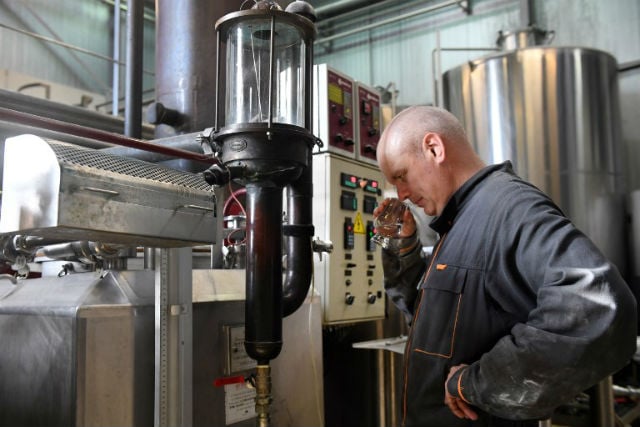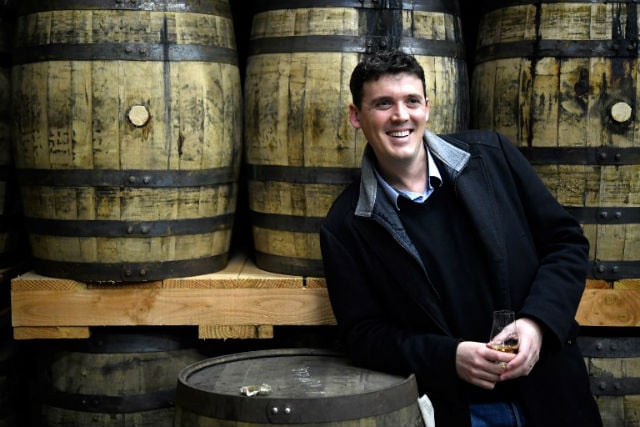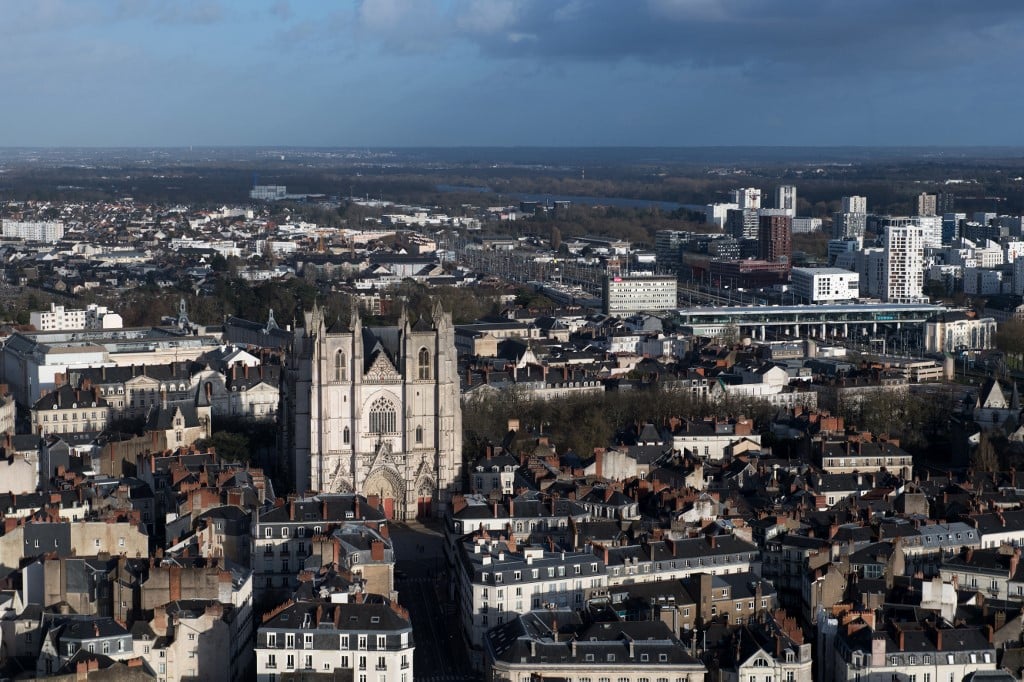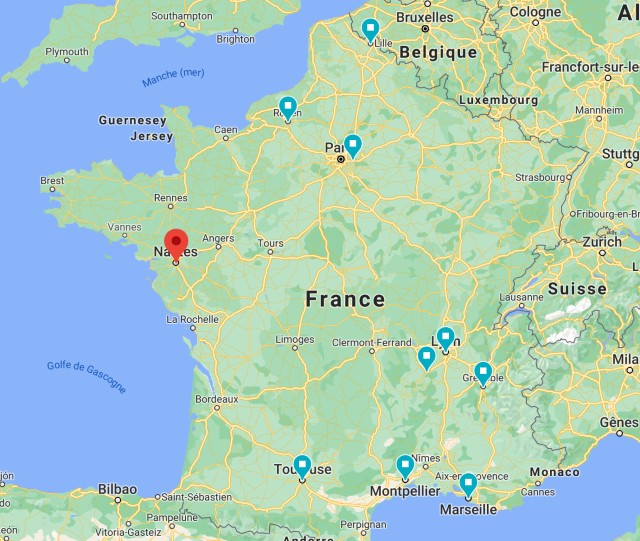
BRITTANY
A wee dram, s’il vous plait: Meet France’s new whisky makers
Japan stunned traditional whisky-makers by exploding onto the market and winning over connoisseurs of the tipple. Now, entrepreneurs in France -- a country better known for cognac -- are throwing themselves into the once exclusive world of whisky.
Published: 25 November 2018 09:40 CET

David Roussier, French CEO of the Warenghem distillery. Photo: Fred Tanneau/AFP
The country today has 33 fully-operational whisky distilleries with another 30-odd soon to come on line — as soon as their unique Gallic-styled spirits have matured in barrels for the required minimum three years — according to
the French Whisky Federation.
France already has 79 local whisky brands on the market, and sales have quadrupled from 215,000 bottles in 2010 to 850,000 bottles last year — the bulk for the domestic market.
No country on Earth drinks more whisky than France per capita — some 2.15 litres per person in 2014, according to research agency Euromonitor. The closest competitor was Uruguay at 1.77 litres per person, with the United States in third place at 1.41 litres.
The first whisky was distilled on French soil in 1987, by Warenghem in Brittany in northwest France, across from whiskey giant Ireland. Warenghem remains France's biggest producer of the golden liquid.
In the picture below, a technician at Warenghem sniffs the spirit midway through production.

Photo: Fred Tanneau/AFP
“There is good whisky in France,” Jim Murray, author of the best-selling “Whisky Bible”, told AFP.
Today, the country holds two European licenses for whiskies produced under a “protected geographical indication” — meaning they come from a clearly delineated geographical area and are made using a distinct recipe and method.
Besides the two newcomers — Alsatian whisky from the Alsace region and Breton whisky from Brittany — there are only two other PGIs for whisky in Europe — for Scotland's Scotch and Ireland's whiskey, which has its own
spelling.
“France can make very good whiskies because it has all the required raw materials — barley, malt, and pure water — as well as well-honed skills in distillation and ageing,” said Christophe Fargier, founder of the Lyon-based
brewery Ninkasi which has just launched its very own whisky.
It's the 'terroir'
Three of the world's five biggest producers of malt — a special mix of germinated grains used to make the spirit — are in France, added Xavier Brevet, who co-founded the blog “Le Whisky Francais” (French Whisky).
According to Warenghem boss David Roussier, French whiskies offer something no others can.
“What people look for in a whisky is a degree of authenticity,” he told AFP. “They want that we speak to them of terroir” — the French word used to describe the natural environment in which a wine is produced — including the
soil, climate, and topography.
“In Brittany, we are well equipped for that… Now that people have accepted that we can make whisky in Brittany, we can allow ourselves to be more original.”
Another, unexpected, advantage lies in France's many used wine barrels.
While many Scotch whiskies are matured in barrels previously used for bourbon or sherry, French producers have taken to exploiting the rich aromatic palette of casks that once aged wine.
The increase in demand sent prices soaring: a barrel used to cost about $30, now they go for about $300, said Philippe Juge, director of the French Whisky Federation and author of the French version of “Whisky for Dummies”.
Many newcomers to the whisky world include former distillers of fruit-based spirits, and breweries that have switched to producing beer not for drinking but as a base for whisky, the experts say.
Despite marked growth, the field remains limited for now.
Warenghem sells about 200,000 litres (53,000 gallons) of pure-alcohol equivalent — a measure of quantity used in the spirits industry — per year. Comparatively, a medium-sized Scottish distillery produces about seven
million litres, said Juge.
“There are no more than four or five distilleries in France today capable of large-scale production,” added Brevet.
“The profit margin requirements of the global spirits giants are too high for newcomer producers to meet at this stage of the (French) industry's development,” he said.
Murray says he has observed an explosion of micro-distilleries in France as elsewhere in the world.
“But producing sufficient quantities, and with consistent quality, is a major problem. We need to invest in them and believe a bit more in their future,” he said.
Url copied to clipboard!



 Please whitelist us to continue reading.
Please whitelist us to continue reading.
Member comments